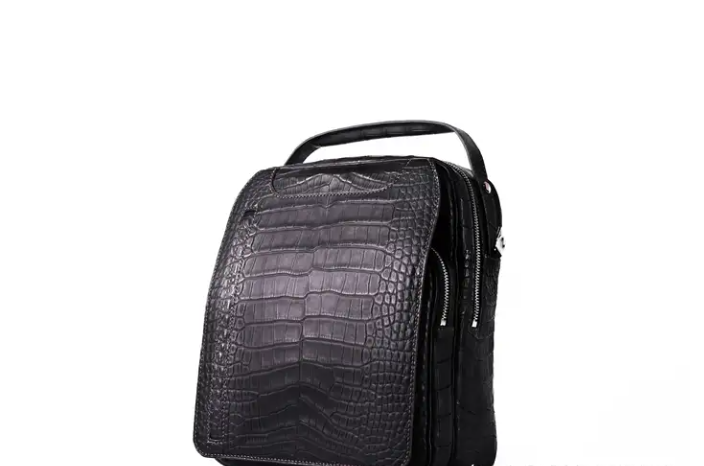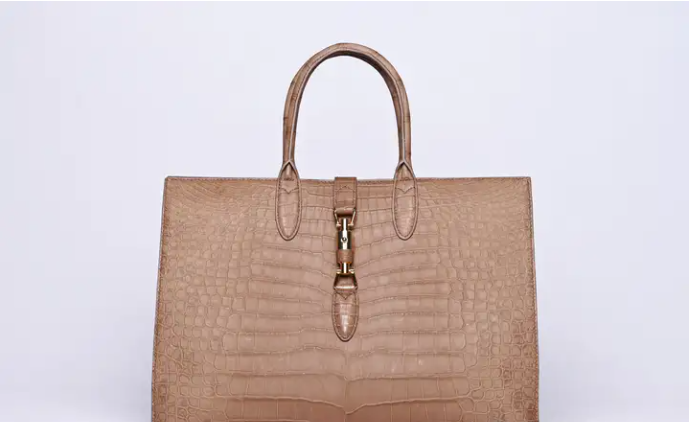What kind of leather is your bag?
Leather is a non-perishable animal skin that has been denatured by physical and chemical processing such as hair removal and toiling. Leather is made up of natural protein fibers tightly woven in three-dimensional space, its surface has a special grain layer, with natural grain and luster, feel comfortable, then do you know what the classification of leather? Leather can be classified according to different factors such as source, production process and use.
Animal leather - natural leather
Natural leather refers to the leather made from the skin of animals. It is obtained by processing, tanning, and treating the skin of animals to make various leather goods, clothing, footwear, and other leather goods.
Natural leather usually comes from animals, such as cows, sheep, pigs, horses, crocodiles, snakes, etc. Different types of leather have different properties and uses.
Cowhide: The most common type of leather, durable and suitable for a variety of uses.
Sheepskin: Soft and flexible, used for clothing and small leather goods.
Pig skin: Thicker, usually used to make purses and handbags.
Crocodile skin, ostrich skin, python skin, etc. : belong to the luxury category, because of their unique texture is highly sought after.
How to make natural leather: The process of making natural leather involves stripping the animal's skin, tanning (to make the skin soft and preservative), coloring and finishing, and finally forming leather with a variety of textures and colors.
Properties: Natural leather has a unique texture and appearance because each animal's skin has its own characteristics. It is generally stronger, more durable and breathable than synthetic leather.
Comfort: Leather has good comfort because it breathes and helps regulate body temperature. This makes leather goods popular in different seasons.
Durability: Natural leather products that are properly maintained usually have long-term durability. They can last for years, even decades, and will become smoother and more beautiful over time.
Price: Natural leather products are usually more expensive due to their manufacturing process and quality. Different types and grades of leather will have different prices.
Sustainability: When making natural leather, you need to use a lot of water and energy, and you also need to dispose of waste. Therefore, for environmental protection and sustainability, some people prefer to choose synthetic or sustainable alternatives.
Natural leather is a high-quality material that is highly prized for its unique appearance, comfort and durability. However, when purchasing leather goods, ensure that they are legally obtained and put proper care into their use and maintenance to extend their useful life.

Artificial leather
Artificial leather, also known as synthetic leather, artificial leather, or fake leather, is a material made from synthetic materials that replaces leather. Unlike natural leather, it does not come from the skin of animals, but is produced industrially using synthetic materials to mimic the appearance and texture of natural leather.
Materials: Synthetic leather is usually made from a variety of synthetic materials, including polyurethane (PU), polyvinyl chloride (PVC), synthetic fibers, plastics, and other chemical components. These materials can mimic natural leather in appearance and texture.
Appearance and texture: Artificial leather is designed to resemble natural leather with texture, color and gloss. It can be smooth, rough, shiny or matte, depending on the synthetic material used and the processing method.
Sustainability: Some faux leather products are manufactured in a sustainable way, using recycled materials or more environmentally friendly production processes. These products are considered environmentally friendly because they reduce the need for animal skin.
Price: Generally speaking, artificial leather products are more economical than natural leather products. This makes faux leather an option for consumers with limited budgets or ethical or environmental concerns about animal leather.
Durability: The durability of artificial leather varies depending on the manufacturing process and the quality of the materials used. Some high-quality faux leather products can last for years, but are usually not as strong as natural leather.
Maintenance: Compared to natural leather, artificial leather is generally easier to maintain and clean because they are not as susceptible to moisture or mold.
Artificial leather is a versatile alternative that can be used in a variety of products, including clothing, footwear, furniture, car seats, bags and accessories. Choosing between artificial and natural leather often depends on personal preferences, moral beliefs, budget and use.

Top layer, two layer and synthetic leather are all terms related to leather products and they denote different types of leather or leather substitutes. Here are their definitions and characteristics:
Top layer leather
The head layer refers to the outermost layer of animal skin and is one of the highest quality leathers. It usually comes from the surface of the skin of cows, sheep or other animals.
Features: The top layer of skin retains the natural texture, lines and flaws of the skin, with a unique appearance and texture. It is very durable and will become brighter and more distinctive over time.
Usage: The top layer is often used in high-end leather products, such as high-end leather bags, footwear, leather goods and furniture. Its price is usually higher because it is one of the highest quality leathers.
Double skin
The second layer of skin is the second outer layer of an animal's skin, located below the head layer. It is processed and trimmed, usually to remove the surface part of the skin.
Features: The second layer is slightly thinner than the first layer, but still has a certain quality and durability. Its appearance is smooth and sometimes tinted and textured to mimic the appearance of the first layer of skin.
Use: Two layers of leather are usually used to make mid-range leather products, such as some leather bags, sofas and footwear. Its price is relatively low, but it still has good quality.
Synthetic leather
Definition: Synthetic leather is a leather substitute that does not come from animal skin. It is made from synthetic materials such as polyurethane (PU), polyvinyl chloride (PVC) or other synthetic fibers.
Features: The appearance and texture of synthetic leather has been designed to mimic the characteristics of natural leather. It is generally lighter, easier to maintain and clean than real leather, and more affordable.
Uses: Synthetic leather is widely used to make a variety of products, including clothing, footwear, furniture, car seats, bags and accessories. It is part of an environmentally friendly and sustainable option as it does not require animal skin.
First, second and synthetic leather all have their own uses and characteristics, and the choice depends on your needs, budget and personal preference. Natural leather is often seen as a high-quality and durable option, while synthetic leather is a more economical and environmentally friendly alternative.






